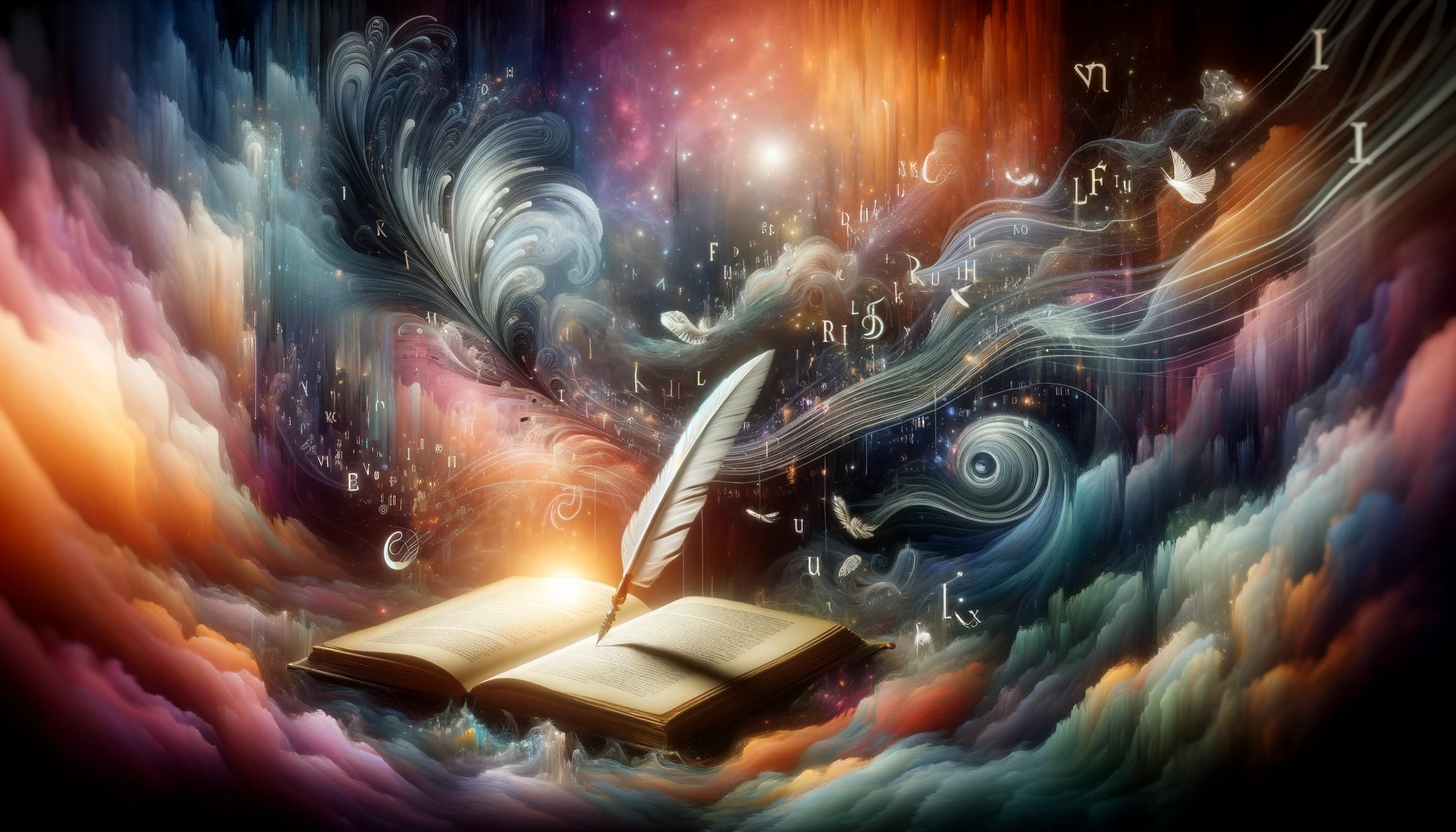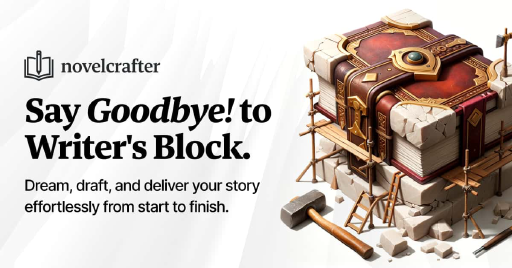Understanding Symbolism in Writing
What is Symbolism in Writing?
Symbolism is like hidden treasure in a story, where symbols stand in for ideas or concepts that aren’t spelled out directly. These symbols—whether they’re things, characters, or happenings—carry extra meaning. Think of a dove, which whispers tales of peace, or a storm that might shout of conflict. By slipping symbolism into your narrative, you give readers a story within the story, adding layers they can’t wait to peel back.
| Type of Symbol | Example | What it Means |
|---|---|---|
| Thing | Red rose | Love or passion |
| Color | Black | Death or mystery |
| Event | Storm | Conflict or struggle |
Importance of Symbolism in Storytelling
Symbols are your storytelling allies, helping you say more with less. Check out why symbolism is a game-changer:
- Deeper Story: A good symbol can add layers to your characters and themes, turning heads and pages as it draws readers in.
- Emotional Bond: Symbols can reach into readers’ hearts, crafting a personal connection that keeps them hooked.
- Theme Booster: They keep your story’s themes tight and focused, binding everything together in a neat, compelling package.
Sprinkling symbols into your work can turn your narrative from just words on a page to something that truly resonates. If you’re itching to hone your craft further, don’t forget to peek at our article on how to improve writing skills. Unlocking these secrets could be your key to spinning unforgettable tales that hit home with readers.
How to Effectively Use Symbolism
Symbolism spices up your storytelling, giving it extra depth and layers. Mastering the art of symbolism can take your writing to another level by making it easier for readers to connect with the themes and emotions wrapped up in your words.
Choose Symbols That Speak
Picking the right symbols is like choosing the perfect toppings for your favorite pizza; they should gel well with your story and make sense to the readers. Think about the feelings or ideas you want those symbols to bring to life. Consider these points when selecting symbols:
| Aspect | What to Consider |
|---|---|
| Relevance | The symbol should fit the story’s vibe and characters. |
| Universality | Choose symbols that resonate with folks across different cultures. |
| Clarity | Steer clear of symbols that make readers scratch their heads in confusion. |
Create Symbolic Patterns
Using symbols in a pattern brings glue and flair to your story, making everything come together nicely. Peppering your narrative with recurring symbols can help highlight your main themes, giving readers the chance to connect the dots as they go along.
| Symbol | First Shows Up | What’s Going On | What’s It Mean? |
|---|---|---|---|
| Rose | Chapter 1 | A gift to someone special | Stands for love |
| Storm | Chapter 4 | During a big fight | Represents chaos |
| Mirror | Chapter 7 | In a moment of deep thought | Stands for self-awareness |
Put Symbols to Work
Good symbols should vibe with your story’s overarching themes. They shouldn’t just stand in for certain ideas but should also amplify the key messages you’re trying to share. Say your theme is all about feeling alone, you might throw in a symbol like a solitary tree or an abandoned house.
Playing it right with these symbols can make for a richer reading trip, helping your themes strike a chord with your audience. Think about how these symbols echo the path your characters walk or the situations they find themselves in.
Nail down choosing meaningful symbols, set up patterns, and boost themes, and you’ll soon be acing symbolism in your writing. Check out our guide on how to improve writing skills or find some great tips for writing a novel for extra help.
Types of Symbolism
Sprinkling a bit of symbolism into your writing can really make your story shine. By leaning into symbolism, you add layers of meaning that enrich your narrative in ways that words alone might not. Let’s peek into how universal, cultural, and personal symbols might amp up the magic in your storytelling.
 What Poetry Feels Like
What Poetry Feels LikeUniversal Symbols
Ever notice how some symbols have the same vibe no matter where you are? These are universal symbols, carrying meanings that ring true across different backyards worldwide. Picture these as a shortcut to your readers’ hearts, where a single image tells a thousand tales. Here’s a few to keep up your sleeve:
| Symbol | Meaning |
|---|---|
| Heart | Love and affection |
| Dove | Peace and tranquility |
| Snake | Danger or deceit |
| Ladder | Growth and progress |
Those familiar shapes and meanings can help your readers feel the feels you want them to. Want an extra tip or two on storytelling? Sneak over here to get your skills soaring.
Cultural Symbols
Think of these as a treasure trove filled with meanings specific to one group, festival, or country. Cultural symbols aren’t one-size-fits-all; they come with their own backstories and quirks:
| Symbol | Culture | Meaning |
|---|---|---|
| Dragon | Chinese | Power and strength |
| Maple Leaf | Canadian | National identity |
| Ankh | Egyptian | Life and immortality |
| Yin Yang | Chinese | Balance and duality |
Giving your tales a sprinkle of these association-rich objects or symbols not only makes your characters pop but breathes life into settings, making them more relatable and rooted. Need another tool for your character-building kit? Take a peek here for tips!
Personal Symbols
Now we’ve got the funky, unique symbols that hold special meaning only to you—or your characters. These babies might not ring a bell universally or culturally, but they pack a punch personally:
| Symbol | Personal Meaning |
|---|---|
| Broken Mirror | Lost hopes or identity |
| Old Photograph | Memories of the past |
| Specific Flower | Love for someone special |
Drawing on these deeply personal symbols gives your story a raw, intimate vibe and invites readers to dig a bit deeper and connect with your emotional core. Feeling a bit stuck? Check this out to shake off that writer’s block!
Mixing these types of symbolism is like crafting a secret code for your readers to unlock emotions and themes. So, don’t hold back—experiment with these in your storytelling toolkit. Dive in, and watch your story blossom!
Incorporating Symbolism in Different Genres
Bringing symbolism into your writing is like adding secret ingredients to your recipe—it flavors your storytelling and makes it richer. Whether you’re writing fiction, poetry, or nonfiction, different genres let you play with symbolism in their own quirky ways.
Fiction Writing
In fiction, symbols can take your themes and characters to new heights. Imagine symbols as hidden messages sneaking around your story. You can slip them in through things like objects, nature, or recurring motifs. Like, think of a flower that pops up in your story, always when love or sacrifice is on the line—it might just echo a character’s feelings.
| Symbol | Translation | Where It Fits |
|---|---|---|
| The Color Red | Passion or Anger | Often sneaks into character outfits or the way places are described |
| A Broken Mirror | Self-Reflection | When a character’s having a ‘who am I?’ moment |
Symbols in fiction invite your readers to dig deeper and connect more with the story. Align those symbols with your themes for extra punch. You can jump to our piece on tips for writing a novel for a deeper dive into mixing symbolism into your tales.
Poetry
When it comes to poetry, symbolism is like its best friend. Poets use tight-knit words to pack big ideas and feelings into symbolic images. A tiny image has the power to make readers feel or think about a million things, all stirred by those little symbols.
| Symbol | Interpretation | Where It Shows Up |
|---|---|---|
| Water | Change or Renewal | Often in poems about transformations or fresh starts |
| Birds | Freedom or Escape | They often symbolize hope or dreams of flying away |
In your poems, think of how these tiny symbols can make your imagery pop and strike a chord with others. Explore our advice on tips for writing poetry to get ways of weaving symbols into your verses.
Non-Fiction Writing
Symbolism in non-fiction? Heck yeah—it helps make complicated stuff feel more down-to-earth. You can use symbols to crystallize tricky topics into ideas folks can latch onto. Maybe use a recurring image to hammer home your biggest points.
| Symbol | Why You’d Use It | How It’s Used |
|---|---|---|
| The Tree | Growth or Stability | Could stand for societal progress in essays or articles |
| Chains | Restriction or Obstacle | Handy for highlighting systemic problems in social commentaries |
Using symbolism cleverly in non-fiction can draw folks in while keeping your message neat and clear. For more smart writing moves, check out our piece on how to improve writing skills.
Playing with symbolism across genres spices up your writing, making it stick with readers long after they’ve finished. Try different symbols, and see how they can make your stories sing, whether you’re weaving fiction, poetry, or non-fiction.
Common Mistakes in Using Symbolism
Getting your symbols spot on takes some finesse, and it’s easy to wander into a few classic traps. Knowing these blunders can sharpen your writing and give your symbols real punch.
Overusing Symbols
A big goof folks make is scattering too many symbols across the page. Like too much salt on your fries, it drowns out the flavor and leaves everyone baffled. Overstuff your story with symbols, and suddenly the main idea’s just noise. The trick? Stick to a handful of great symbols that hit home with your story’s heartbeat.
| Mistake | Effects |
|---|---|
| Overusing Symbols | Meaning sidetracked, folks scratching their heads, storyline tangled |
Making Symbols Too Obvious
Then there’s the trap of making symbols scream their meaning like neon signs. When it’s too in-your-face, it loses its punch. Keep symbols subtle. Let readers dig a bit, piece things out themselves, and unwrap hidden layers. This not only hooks ’em in but also gives your story that extra something.
| Mistake | Effects |
|---|---|
| Making Symbols Too Obvious | Mystery’s gone, readers tune out, everything falls flat |
Ignoring the Subtlety of Symbolism
Neglecting the gentle touch of symbolism can throw your story for a loop. Symbols should enrich, not overshadow. Get them to slide smoothly into the tale, offering glimpses into your characters or themes without stealing the spotlight. Nail that balance, and the symbols will sing the song your story’s meant to tell, all without being too blunt.
| Mistake | Effects |
|---|---|
| Ignoring Symbol Subtlety | Narrative gets jerky, emotions fall flat, storytelling loses its groove |
Steering clear of these common mix-ups will make your symbolic writing stand out. Wanna keep stretching those writing muscles? Dive into some light reads on how to amp up your writing skills or novel-writing basics.
Exercise: Sprucing Up your Writing with a Touch of Symbolism
Spice up your storytelling game by adding a dollop of symbolism. This little trick can make your story not only more interesting but also layer it with meaning and create a deeper connection with readers. Check out these exercises to get your symbolism mojo going.
Picking the Right Symbols for Your Tale
Step one is finding symbols that gel with your story’s vibe and characters. Here are some things to think about when picking symbols:
| Thing to Think About | What It Means |
|---|---|
| What’s It Got to Do With the Story? | Pick symbols that match the big ideas in your tale. |
| Feels | Think about how the symbol makes people feel and its hookup with the audience. |
| Where and When | Make sure the symbol fits the time and place and the whole genre of your story. |
Take a bit to jot down some possible symbols that echo your story. Whether it’s a red rose, an old watch, or a sunny day, find stuff that adds weight to your tale.
Sneaking Symbols into Your Story
Now you’ve got your symbols, slide ’em into your tale like butter. You want the magic to work without the “ta-da” moment. Try out these tips:
- Let It Flow: Use symbols as part of actions or descriptions instead of spelling out what they mean.
- Pick Your Moments: Bring symbols into play at big scenes for more punch, like a falling leaf when a character’s feeling let down.
- Keep Dropping: Mention the symbol more than once to really hammer it home without overdoing it.
By playing it cool with your symbols, you can add layers to your story while keeping your readers hooked.
Checking the Symbolic Vibes
When you’ve scribbled down draft number one, have a little chinwag with yourself about how your symbols pan out. Here’s some soul-searching for you:
| Question | Why Are We Asking? |
|---|---|
| Do they juice up what you wanted to say? | Check if your symbols pack a punch with the main ideas. |
| Obvious or Just Right? | Make sure they’re there for folks to wonder about, not scream about. |
| How’s the Buzz? | See what your buddies or readers are saying for your next go-round. |
Getting a handle on how your symbols are working can crank your writing up a notch. Ready to get even more skills? Check out our piece on how to improve writing skills for more know-how and practice fun.

 Grab my poetry book, 'we're all just wanderers in the end' Here
Grab my poetry book, 'we're all just wanderers in the end' Here AD: Your Book Finally Written...
AD: Your Book Finally Written...